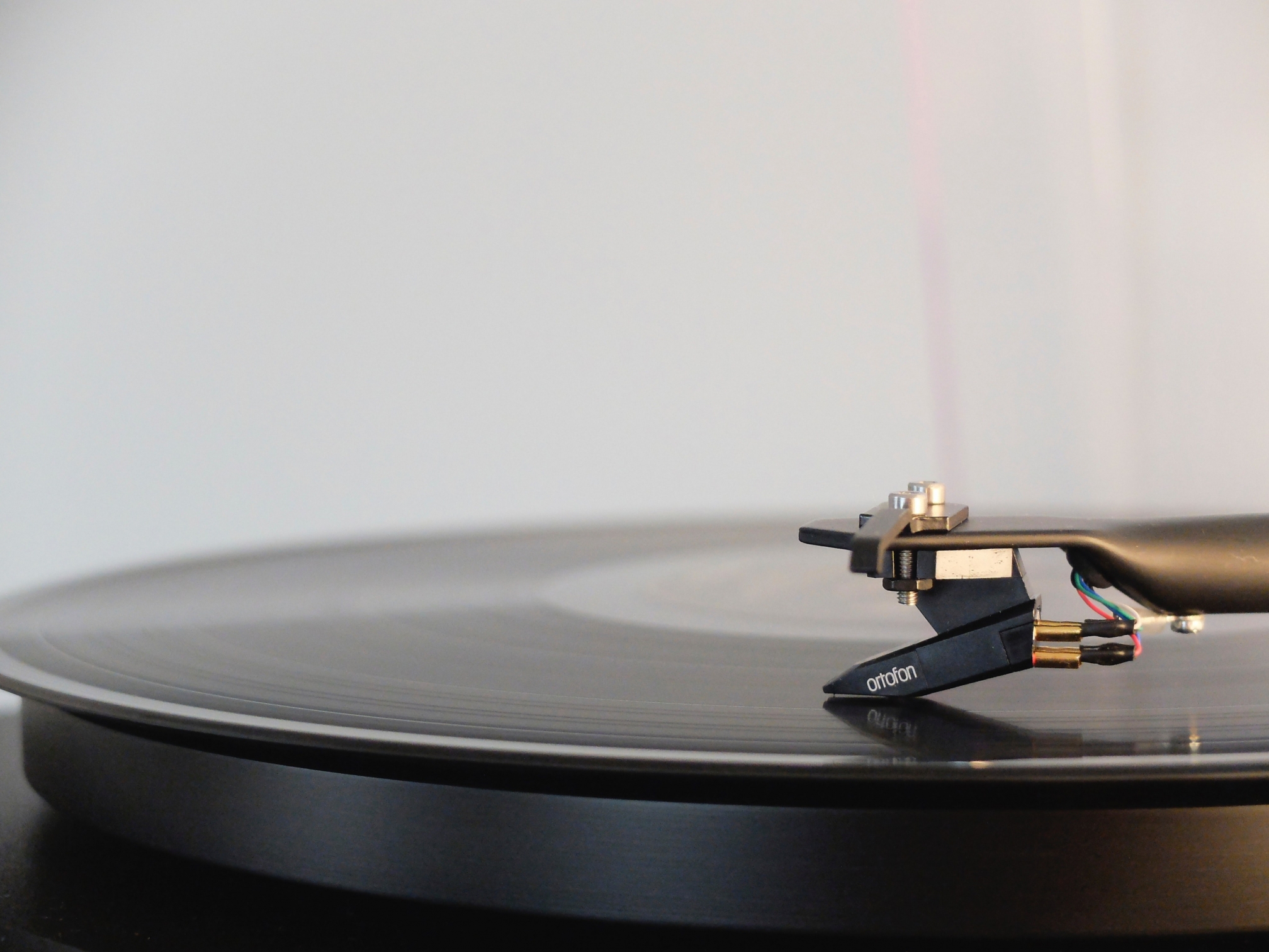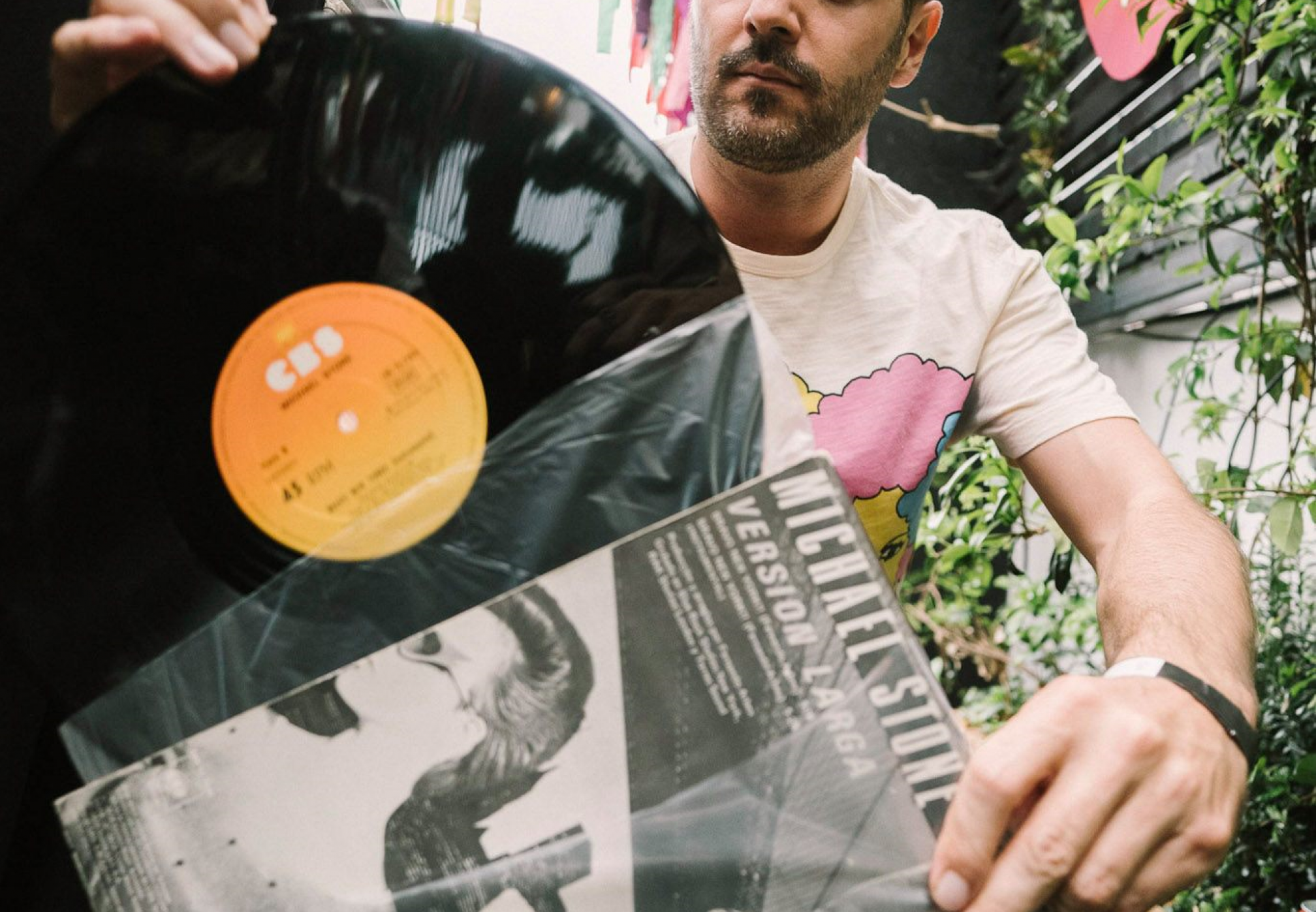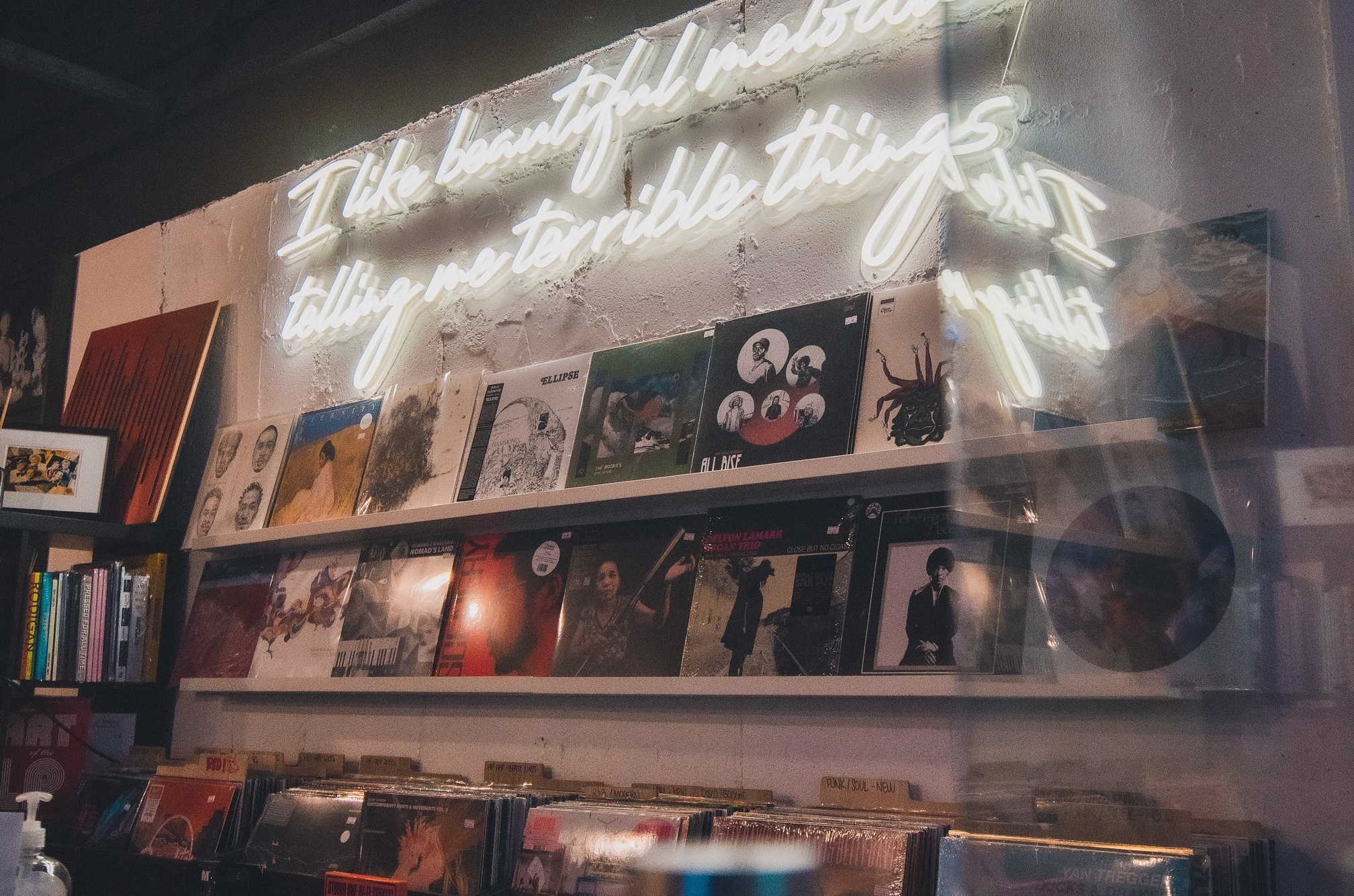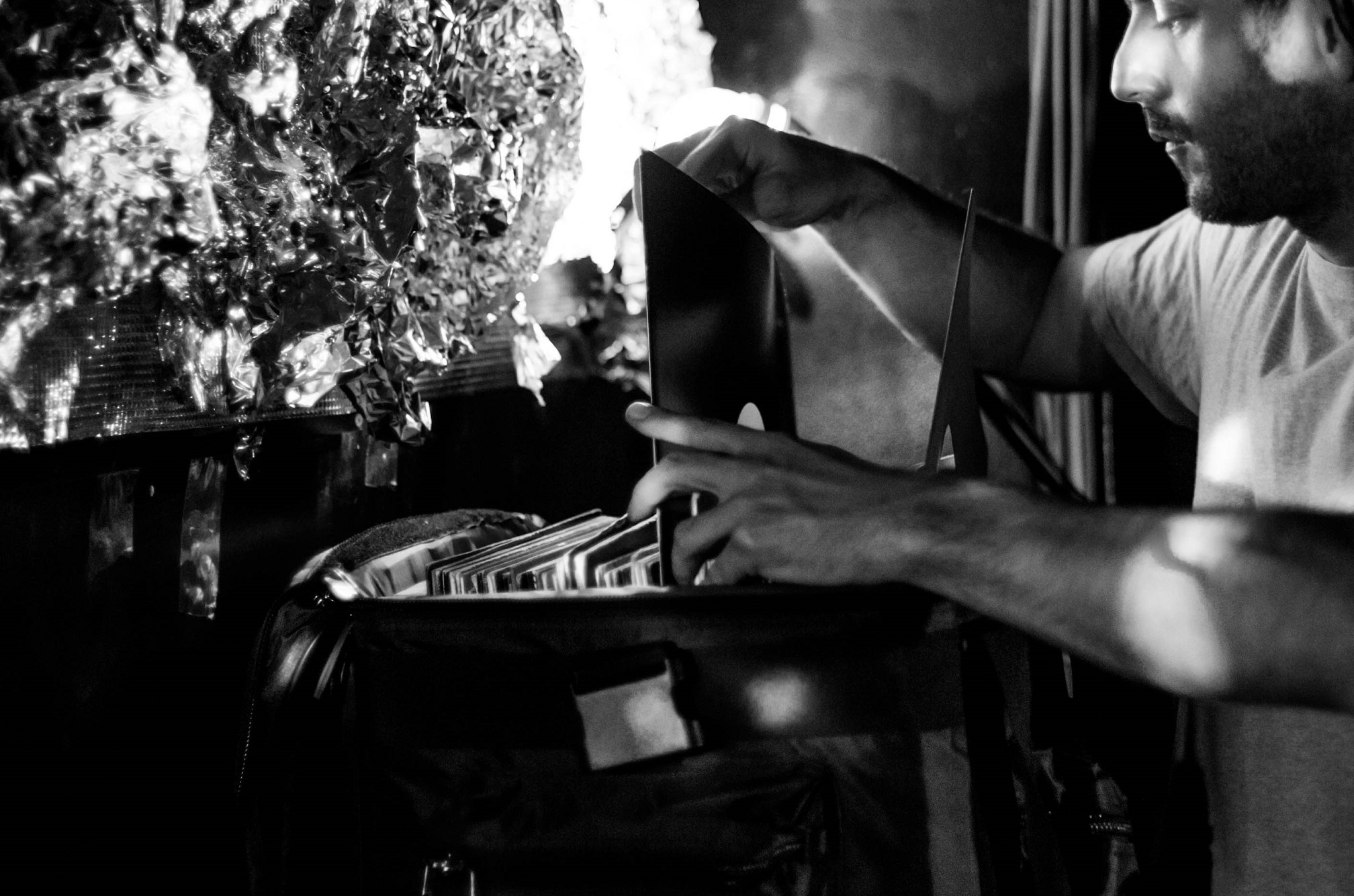 Features
Features
For the love of vinyl: The indefatigable format's enduring appeal throughout Asia & beyond
A selection of the region's audio-obsessed share their thoughts on this most enigmatic of mediums
When considering media formats from across the modern age, the vinyl record perhaps represents the ultimate escape artist. Arguably, it should long have been rendered obsolete, but its unique appeal has seen it survive a succession of would-be mortal blows over the years. Though digital DJ set-ups long ago became the norm in nightclubs and bars, vinyl consoles never vanished completely, and the legendary audiophile listening bars for which Tokyo is famed have in recent years inspired similar nightspots to appear and flourish throughout Asia. But just what is it that makes the vinyl record so indelible? I spoke to an eclectic selection of musically-immersed souls across the continent to dive deeper into vinyl's enduring appeal.
The vinyl record's roots extended way back to the late 1800s with the arrival of the Gramophone. The adapted medium exploded in popularity from 1948, when CBS introduced the first Long-Player records, which were able to accommodate enough data to fit an album's worth of music. Following decades as the top dog for at-home music consumption, the challengers began to arrive thick and fast. The first genuine adversary was the ultra-portable cassette tape which appeared in 1963. Our beloved vinyl held its own against this cheaper and more compact format until the mid-eighties, when the emergence of what looked like the nail in the 12” coffin began to rear its shiny head – the CD, or compact disc. This glossy new medium began hitting shelves in 1982 with the promise of pristine, digital audio, allowing buyers to save money and space when compared to its heavy-set vinyl counterpart.

At that time, the reprieve came thanks in no small part to the explosion of club and dance culture. Throughout the '80s, affordable synthesizers, drum machines, and samplers had helped inspire the birth of a profusion of new sounds and genres. Intoxicating rhythms began to sprout, grow, and cross-pollinate. The emerging flavours of hip hop, electro, proto-house, new beat, techno, house, and rave were beginning to make their collective presence felt on the global stage. This almost endless list ignited a flaming mass of club activity which had at its very heart a DJ, a pair of turntables, a mixer, and – perhaps most importantly – a big old box of vinyl records. (It would perhaps be remiss to neglect to mention the ubiquitous presence of certain other stimulating forces which helped to drive this hedonistic eruption, but it's probably best to save jumping headlong into that Pandora's box for another day).
By the early to mid-nineties vinyl sales began to rebound as every man, woman, and child pawned off their electric guitars to buy a set of decks. It was the age of the superstar DJ, a tidal wave of rave-inspired debauchery consumed much of the known world, and things would never look the same again. While the major labels had all but given up on wax, and on LP albums specifically, sales for 12” singles on independent labels were now booming. At least, relatively speaking. At the time, an averagely successful underground release could expect to sell a few thousand units, and those that struck a chord in the dance subconscious could sell many times more than that (these figures may seem paltry compared to mainstream music, but set against today's underground vinyl sales, they're, in fact, fairly impressive). “It was an exciting time to have the opportunity to get into a studio and make a record,” says Yokohama-based producer, musician and DJ, Max Essa. “There was a lot going on: club nights springing up all over the country, magazines, even TV shows. The records we were making for the D.i.Y sound system labels, Strictly 4 Groovers and D.i.Y Discs were selling around 1,200 to 1,500 copies I think. The 'Pinhole Burns EP' we did for Paper Recordings in '97 sold about 4,000 copies – which by today's standards is a huge amount."

It was around this incredible moment somewhere in the middle of the '90s that I myself joined the dance party, eagerly thumbing through the racks of my favourite record stores for the newest sounds, locking myself away in my bedroom trying to master the perfect mix, and spending far more time than I care to admit with my head jammed in the nightclub bass bin. In 2002, I set up a label – the appropriately named Also Ran Records. Our first release sold 2,200 records, our titles were on sale in stores as diverse as Black Market Records in Soho and HMV on London's Oxford Street, and, though I had no idea what I was doing, I thought running a label was the easiest thing in the world. By the second, third, and fourth releases, the latest threat to the vinyl joyride was beginning to make its irresistible presence felt. Our sales dropped consecutively, 1500... 800... 500. Something wasn't right, and I realised my ambitions of a career as a record label executive were being served something of a rude awakening.
The hostile threat in question was the simultaneously marvellous and dastardly MP3. This ethereal anti-product surely represented the deadliest assault on vinyl yet. Cheap, or very often free to download, MP3s took up no space, never deteriorated in quality, could be shared almost instantly, and on top of this, were compatible with the new CDJ decks that had been steadily growing in popularity. While many were quick to jump on to this streamlined alternative, some of us were far slower to adapt.
Matty Wainwright of Singapore-based The DJ Dispensary scored his first big contract in the early 2000s – a job providing the soundtrack at a fancy new hotel bar that was opening in Mumbai. He travelled to London to meet the booking agent, armed with a giant crate of vinyl, before receiving a digital wake-up call of his own. “The agent said there were no vinyl decks there and that I had one week to get all of my records ripped to CD before I shipped out! So that was a baptism of fire!” This enforced adjustment came with unforeseen benefits, however. “As the residency went on, I was glad of the broad spectrum I could play from the huge digital library I was able to carry with me, but it did take some time to get used to,” says Matty.
Sure enough, the practicalities of using digital music when DJing has been one of the driving forces in its unstoppable rise in the clubs. Previously, a DJ would perhaps carry an average of 50-100 records to a gig – which is all very well if the performer knows the crowd and is confident they'll respond to the music he or she is packing – but if things go awry in the club and the dancers start to disperse, the added flexibility that digital storage brings can be a lifesaver. For Bangkok-based DJ, producer, and More Rice Records co-founder, Sarayu, the weightlessness of the digital medium bests vinyl's undeniable aesthetic charm when it comes to the nuts and bolts of gigging. “Vinyl is something physical you can touch and feel, you can really appreciate how much work has been put into it through the presentation and artwork,” he says, “[But] digital DJing has made it possible to carry a huge amount of 'records' without breaking your back. I personally play with USBs more often and on rare occasions records, as for me it’s much easier to carry one USB than a whole bag of records.”
Another aspect of digital music's attraction is born out of cost-saving practices employed by even vinyl-focussed labels. Previously, advance promotional copies of records would be sent to taste-maker DJs to help build a buzz around the release. This, of course, was an expensive endeavour, and now cash-strapped labels opt to promote their forthcoming releases digitally, as Max Essa explains. “One of the big differences now, to maybe 15 or 20 years ago, is that pretty much all promo releases from labels are digital,” he says. “This means if you want to play upfront, new material you're going to have to at least burn some CDs!”

Despite the obvious practical advantages of the MP3 (or WAV, or AIFF, or FLAC, or whichever file extension you favour), the last few years have seen a resurgence in vinyl sales, as well as a renewed interest in vinyl DJing. While the majority of the newly buoyant sales figures are accounted for by big labels pressing up classic and commercially-focused albums for collectors, there has been a tangible shift back towards vinyl-only bars, with the switch particularly dramatic among the younger generation. “As a millennial who grew up in the era of CDs and Limewire, there's something there in the analogue realm that a bunch of 1's and 0's can't beat,” says Nick Bong, who runs the Analog Vault record store in Singapore. “Music's about movement to me, so when there's an electrical current actually moving through stuff that makes sound come out of speakers, it feels more, I don't know, authentic? That isn't to say digital music isn't authentic, there's just an actual sense of moving parts that comes with analogue gear and vinyl that works just great with music. Movement and energy.” For Nick, the tactile appeal of the physical record helps set it apart from its digital counterpart. “I do love the quirks of a vinyl set that just can't be replicated with digital,” he says. “Like when you hear a mix go slightly off, but the DJ's mixed the incoming track in already: it's loud, they're committed, there's no turning back. They ride the pitch and ease the platter and ever so gently it all comes together, that's still quite magic!”
It may be slightly ironic that one of the digital format's greatest strengths is also a factor leading DJs to move away from it. It's long been known that one can have too much of a good thing, and having an eternity of music to sift through is no exception. Ronny Slama runs Biscuit, an audiophile listening bar in Bangkok. Experience has taught him that a 'quality over quantity' approach lends itself well to music collection. “I was into IT and gaming piracy when I was younger. I quickly understood that having too much of something can really spoil your passion,” he says. “Vinyl-only DJs want to get back to the basics: less quantity, more quality. That, I can relate to. But let's be honest, a good number of them do it to gain 'credibility', as everyone is a DJ now!” Ronny feels that vinyl will be around forever, but he's less than convinced it will retain its popularity among hipsters. “Vinyl has been around for long and always will, now how long will it be trendy for DJs to play on vinyl is another story.”
Indeed, the vinyl-only DJ trend causes heated debate among fans and detractors alike. For some, we should celebrate the return to one of the roots of popular DJing (let's not forget, in years gone by DJs such as legendary disco pioneer Larry Levan or Chicago house legend Ron Trent would use edited reel to reel tapes to work the mix – so, even back in the early days of the movement, vinyl wasn't the only tool for the job). For others, it's little more than a self-indulgent gimmick. As someone who started out playing vinyl, personally speaking, one of the reasons I continue to use it to perform, when the occasion warrants, is that I spent a good many years honing the craft, and not all jocks operating today are able to say the same. It's something of a USP to be able to manually blend a mix when compared with the automated beat-matching afforded by digital set ups. But, this alone isn't enough: without the right music, the skills are largely redundant. “If [the DJ is] doing it as a flex, what's the point in that? If the music's great though, the music's great and you can't argue with that,” says The Analog Vault's Nick Bong. “As much as we like to romanticise vinyl, God bless digital! There are people who can go on about DJs from my generation 'not paying our dues' and stuff like that, which I can definitely agree with because some skills are generally a bit lost on us.”
It seems
that even for those who admire the concept of a vinyl-only set,
over-hyping the endeavour can grate the nerves. “I personally
respect the DJs who play vinyl only, I think it’s really cool,”
says Sarayu. “The thought process and preparation that has to go
into it before the actual gig is something that most people overlook.
But I don’t think it should be made a big deal when the party is
being promoted as a VINYL ONLY DJ SET!”

For a section of music producers, having one's work pressed to wax still brings its own kind of satisfaction. I've had a good few releases published on vinyl, and apart from the pleasure of being able to physically touch the creation, it's also a terrific thrill to come across your music on sale when flicking through the racks of your favourite record store. I've also had music released solely in the digital realm, and for me – with vastly more music released digitally than physically these days – there's something deflating about the prospect of my music getting lost in the endless oceans of disposable club fodder. Max Essa has released an exceptional canon of cosmic-slanted music on labels including Hell Yeah, Claremont 56, Needwant, Bear Funk and more, and he shares this feeling. “I prefer to have my releases on vinyl – as well as digital. It is much more satisfying after putting many, many hours into a project to have something physical in your hands to show for it. It's more meaningful somehow. Also, if a label approaches me about releasing something with them, but they're only doing digital, I don't see much point. I can do that myself and not have anybody.”
This desire to own one's music as a real-world product is not just the reserve of the producer, the inclination extends deep into collector territory, too. “The thing about vinyl is the Freedom,” says Matty Wainwright “Any DJ of a certain age remembers when vinyl was the only medium of recorded music that you played when performing. I find my sets when playing just vinyl takes me back to the freedom of that time. It seems like the set can go anywhere, you end up pulling out tracks and mixes that you probably wouldn’t have if you were using a CDJ.” This association between the record and a specific space and time seems to be a phenomenon that resonates with many committed vinyl enthusiasts – including the ability of the owner to affix a given memory to the physical product as well as the music contained within. “A DJ can possibly remember what transpired during their gigs or life on the moment they bought that EP or album,” says Kavan Spruyt from record label, Midnight Shift. “For a collector, it could be a crucial time capsule that was created during an important period in history – for example, when David Bowie passed or when Daft Punk split up.”
Biscuit Bar's Ronny agrees with the power of the medium's tactile quality, but feels this is only a part of the allure. “You pay more attention because you actually take the time to take the record out, clean it up, and put it on the deck,” he says, before going on to explain a more abstract facet to its longevity. “It's unique, limited. In times when digital music can be easily copied, a vinyl collection defines your music integrity.” Finally, Ronny suggests that vinyl's sound quality helps set it apart from digital modes. “Because of its nature and as any analogue media, vinyl can sound very different depending on the setup you're using. Digital media is less flexible in that regard.”
It's certainly true that vinyl records have a subtle sound quality of their own, and – on a well-calibrated system, with good quality needles and well-maintained decks – the perceived added warmth that manifests from the mechanical nature of analogue reproduction can lead to a distinctively pleasing listening experience: the exquisitely subtle top-end distortion and added low-frequency emphasis that manifest from the stylus tracking the groove are a genuine pleasure to behold. It must also be said, however, that when faced with playing records on an inadequate or poorly-maintained set-up, using a digital source can prove far more sonically effective. “The sound of course is a massive part of it,” says Matty Wainwright. “But, let's face it, most of the venues we work in are set up around a digital backbone, so probably no one is going to notice if I am playing an AIFF or wax. Having said that, I am so happy to see the resurgence of smaller custom analogue venues. I think they're going to be so important over the next few years. For these spaces, I'm saying 'vinyl all the way'.”
It appears to be the case that vinyl endures today because of its innate collectability, the memories one attaches to it, its charming aesthetic, its perceived superior sound quality, and the indefinable romance with which it is imbued. It is, therefore, highly likely that the format won't be belting out its swansong anytime soon. Midnight Shift's Kavan shares the belief that these trusty discs will be around for many years to come. “Whilst the digital space is great for global progress, there are still some things that we would like to keep privately, close to our hearts,” he says. “Vinyl signifies that more than ever before. Especially with all the 'noise' we are hearing in the digital space.”


